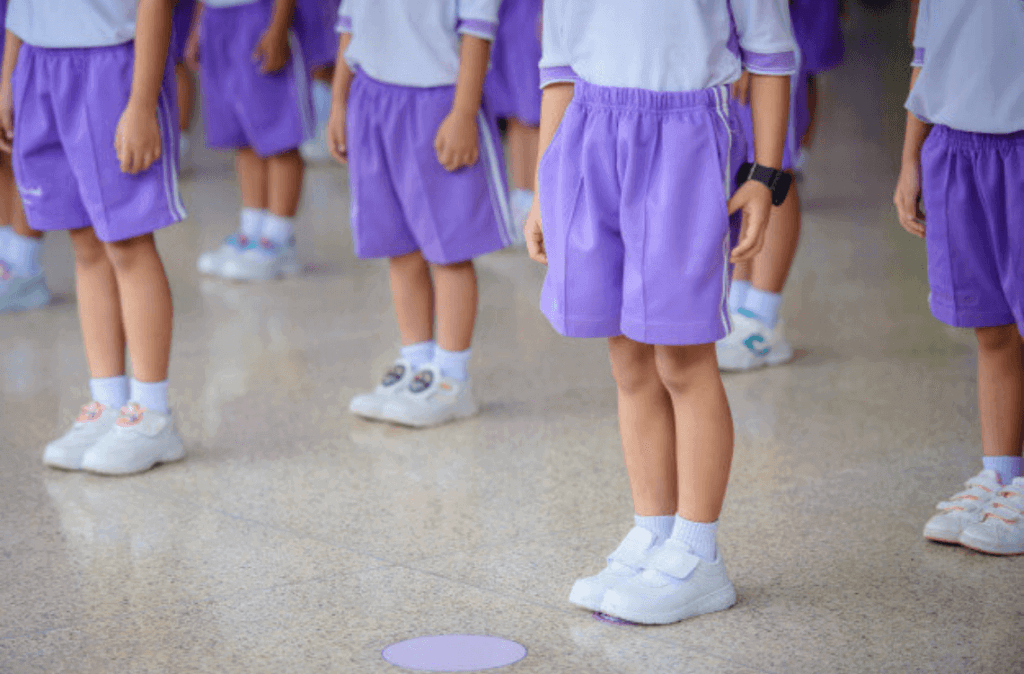Parents should not solely let the school or authorities decide whether or not their children should return to the classroom after COVID-19 cases have been reported in the school, said Parent Action Group for Education (PAGE) Chairman Datin Noor Azimah Abdul Rahim.
Azimah told Motherhood.com.my that if the school refuses to close and parents feel that their children are in danger of infection, then parents have a right not to send their child to school until the school is sanitised.
After all, the school only needs a day to be completely sanitised. Outbreaks are bound to happen. Adhere to the standard operating procedures (SOPs) at all times.
She suggested that schools may want to reconsider the rotation schedule, which was recommended by the Education Ministry.
“While it may appear to be an inconvenience, the benefits are far-reaching.”
When asked if schools which have reported COVID-19 cases be retuning to online classes for the time being, she had this to say:
It isn’t as easy as that. A main assumption made is that every student has a device, connectivity, data storage, and a conducive home environment. This is a fallacy. Face-to-face learning is still most effective.
Azimah was responding to the recent case of 6 students being tested positive for COVID-19 at SJK (C) Puay Chai 2, a primary school in the upper-middle class neighbourhood of Bandar Utama, Selangor.
It has been one week since the outbreak at the school and parents are agitated as they have not been told what is going on.
The school has applied to the Health Ministry for a temporary closure to prevent the virus from spreading.
The very same scenario happened a few weeks ago in a primary school in Subang Jaya. Although a petition was signed by parents, the authorities ordered that the school be reopened after sanitisation.
From January to March 2021, there have been 41 reported COVID-19 clusters from the education sector including 15 from higher education centres, 11 from secondary schools, 10 from preschools and primary schools, as well as 5 clusters involving tahfiz centres and madrasah.
While some parents or on the fence as to whether or not to keep their children home in such a scenario, the choice is in their hands, as not all parents have the means to stay home with their children all day.
Here’s the suggestion from the World Health Organisation (WHO) on reopening schools during pandemic times.
“Deciding to close, partially close, or reopen schools should be guided by a risk-based approach, to maximise the educational, well-being, and health benefit for students, teachers, staff, and the wider community, and help prevent a new outbreak of COVID-19 in the community.”
Besides that, WHO states that several elements should be assessed in deciding to re-open schools or keep them open:
The epidemiology of COVID-19 at the local level: This may vary from one place to another within a country
Benefits and risks: what are the likely benefits and risks to children and staff of open schools? Including consideration of transmission intensity in the area where the school operates: No cases, sporadic transmission; clusters transmission or community transmission
Overall impact of school closures on education, general health, and wellbeing; and on vulnerable and marginalised populations.
WHO Guidelines To Follow
- In a situation like this, it is normal to feel sad, worried, confused, scared, or angry. Know that you are not alone and talk to someone you trust, like your parent or teacher so that you can help keep yourself and your school safe and healthy.
- Ask questions, educate yourself, and get information from reliable sources.
- Protect yourself and others: Wash your hands frequently, always with soap and water for at least 20 seconds, remember to not touch your face, eyes, nose, and mouth.
- Do not share cups, eating utensils, food, or drinks with others.
- Be a leader in keeping yourself, your school, family, and community healthy.
- Share what you learn about preventing disease with your family and friends, especially with younger children.
- Model good practices such as sneezing or coughing into your elbow and washing your hands, especially for younger family members.
- Do not stigmatise your peers or tease anyone about being sick; remember that the virus does not follow geographical boundaries, ethnicities, age, ability, or gender.
- Tell your parents, another family member, or a caregiver if you feel sick, and ask to stay home.
WHO Checklist For Parents/Caregivers
- Monitor your child’s health and keep them home from school if they are ill.
- Teach and model good hygiene practices for your children.
- Wash your hands with soap and safe water frequently. If soap and water are not readily available, use an alcohol-based hand sanitiser with at least 60% alcohol. Always wash your hands with soap and water, if hands are visibly dirty.
- Ensure that safe drinking water is available and toilets or latrines are clean and available.
- Ensure waste is safely collected, stored, and disposed of.
- Cough and sneeze into a tissue or your elbow and avoid touching your face, eyes, mouth, and nose.
